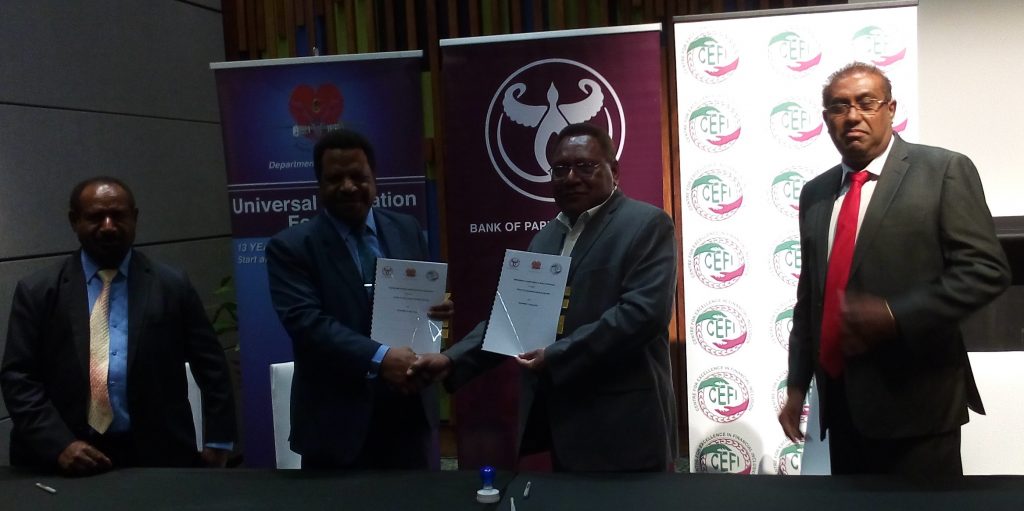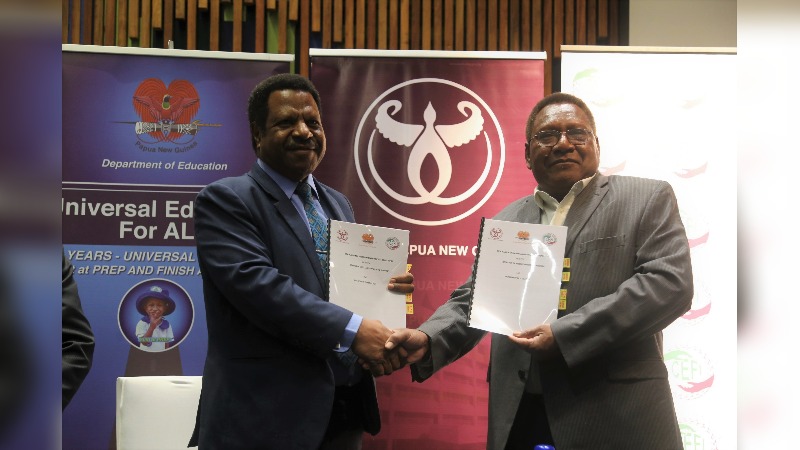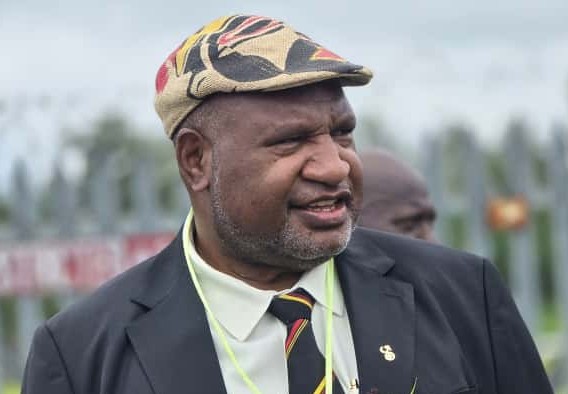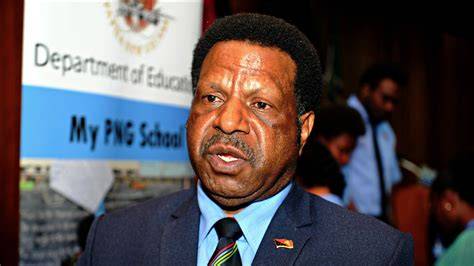Students from elementary to secondary school level will soon learn about everything to do with finance in school now that the wheels have been set in motion to make financial literacy a part of the school curriculum in the country.
This morning saw the signing of a Memorandum of Understanding (MoU) between the Bank of Papua New Guinea (BPNG) and the Center for Excellence in Financial Inclusion (CEFI), and the Education Department to pave way for this aspect of financial education to be taught in schools.
Education Secretary, Dr. Uke Kombra said this MoU will set forth a pilot project that will see 48 schools in the country trial out this new concept this year as approved by the Education Department.
Dr Kombra, when highlighting the importance of teaching financial literacy in schools, said “When this proposal came through to my former minister from the Minister for Treasury for this project to be supported, I whole heartedly advised my minister that we must take this up as a critical subject within our school curriculum.”
BPNG Governor, Mr. Loi Bakani, added that the aim is to get the young generation well vested in how to handle their finances in the future. The more they know about managing money now, the better they will be in the future.

He further said this partnership with the Education Department is part of the CEFI strategic plan 2021 to 2025, which part of it is the implementation of financial education in schools.
“It will be priority for us together with the department of education to roll it out quickly in terms of the pilots and then moving on to the next phase of implementation in the curriculum and teaching also,” said Mr. Bakani.
Mr. Bakani further added that training of the teachers in financial literacy is an important part of the implementation of the initiative and as such, it will be given priority as well.
Meanwhile, when explaining how this will work, Dr. Kombra said financial literacy will not be taught as a new and separate subject. Instead, resource books will be developed to give additional information to support what is already in the curriculum on financial education. For instance, students at the elementary level will be taught the very basics on financial literacy compared to the higher grades.
Nevertheless, the very aim of this MoU will be to pave way for financial education as a relevant need-based curriculum to be integrated into the existing Standard Based Curriculum (SBC) to create a savings culture at an early age by teaching students about managing money, savings, and investments.







